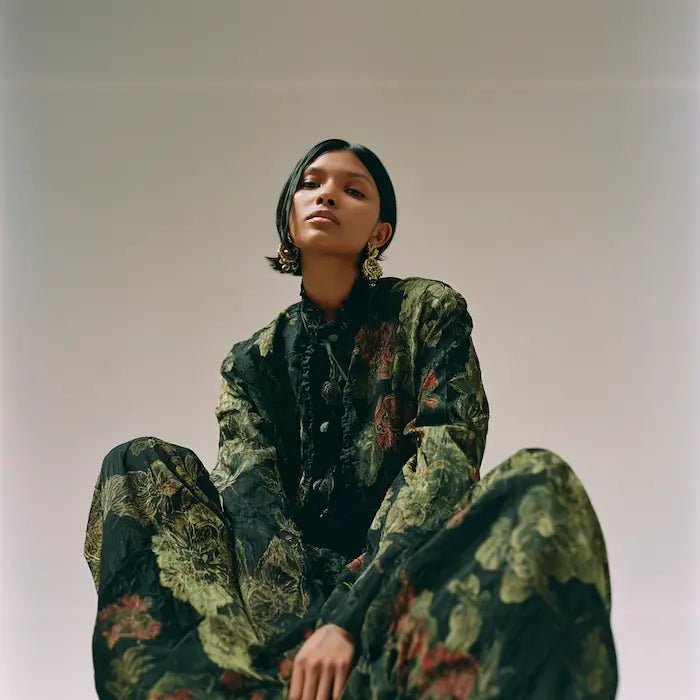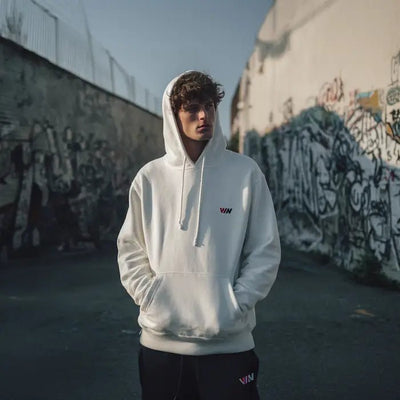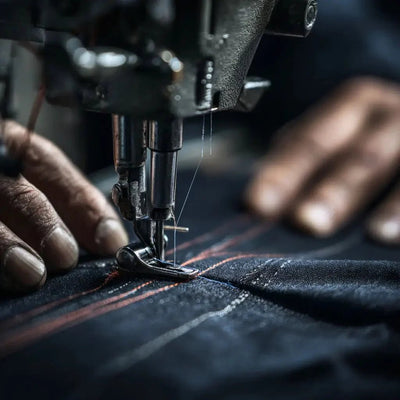
Sustainable Fashion Brands in 2025
Why Sustainable Fashion Matters More Than Ever
In 2025, the conversation around fashion has shifted dramatically. Where once fast fashion brands dominated with cheap prices and lightning-fast collections, today consumers are increasingly demanding accountability. Climate change, overproduction, and labor exploitation have exposed the true cost of fast fashion. The climate crisis has become a key driver for the shift toward sustainable fashion, pushing brands and consumers to reconsider their impact. Out of this growing awareness, sustainable fashion brands have risen as an alternative.
But sustainability in fashion is not just about fabrics or recycling — it’s about the entire ecosystem: sourcing, production, fair labor, supply chains, and even how long a garment lasts. Ethical practices are at the core of true sustainability, encompassing responsible sourcing, transparent supply chains, and fair labor standards. Certifications like the Global Organic Textile Standard (GOTS), which ensures textiles are made from at least 70% organic fibers, play a crucial role in verifying these practices. This article explores the world of sustainable clothing brands, highlights the best sustainable fashion brands 2025, and shows why choosing non fast fashion brands can protect both your wardrobe and the planet.
1. What Defines a Sustainable Fashion Brand?
A sustainable fashion brand isn’t simply a company that uses organic cotton. It’s about adopting a holistic approach that minimizes harm and maximizes responsibility.
-
Fair Labor Practices: Guaranteeing living wages, safe workplaces, and respect for workers’ rights, backed by a clear commitment to ethical manufacturing at every stage of the supply chain.
-
Eco-Friendly Materials: Using organic, recycled, or low-impact materials to reduce environmental footprint.
-
Transparency: Openly sharing information about sourcing, production, and business practices.
Sustainable practices are integrated into every aspect of a brand's operations, from responsible sourcing and ethical manufacturing to waste reduction and transparency. Sustainable brands typically produce smaller collections and avoid rapid fashion cycles to minimize waste.
Core Principles:
-
Responsible Materials: Organic cotton, recycled polyester, TENCEL™, hemp, linen.
-
Fair Labor Practices: Living wages, safe working conditions, transparent supply chains.
-
Slow Fashion Mindset: Timeless, durable pieces instead of disposable seasonal fads.
-
Reduced Carbon Footprint: Local production, low-impact dyeing, renewable energy.
-
Circular Practices: Take-back programs, repair services, resale platforms that allow customers to return used clothing, which can be resold or remade into new products.
These principles differentiate sustainable clothing brands from fast fashion brands, whose business models rely on mass production, overconsumption, and cheap labor.
2. The Problem With Fast Fashion Brands
Fast fashion has democratized style — but at a cost. Giants like Shein, H&M, Zara, and Fashion Nova built empires on trends that change weekly.
-
Environmental Impact: Fast fashion production is notorious for its massive waste and pollution, including high carbon emissions throughout the supply chain. From resource-intensive manufacturing to rapid transportation, the industry significantly contributes to global carbon emissions and environmental degradation.
Key Issues:
-
Environmental Impact: Over 100 billion garments are produced annually; less than 1% are recycled.
-
Waste: Unsold clothes are often burned or dumped, creating landfills of textile waste.
-
Labor Exploitation: Many fast fashion brands outsource to factories with poor working conditions and below-minimum wages.
-
Greenwashing: Capsule “eco” collections distract from the broader unsustainable business model.
For consumers, this means cheap clothes that fall apart quickly — and for the planet, devastating long-term damage.
3. Why Choose Non Fast Fashion Brands?
Switching to non fast fashion brands is about long-term value. These companies focus on:
-
Quality over quantity: You buy fewer pieces, but they last longer. Many sustainable clothing brands focus on high-quality, timeless designs that last longer than fast fashion.
-
Transparency: Supply chains are openly shared.
-
Ethics: Workers are treated fairly and paid living wages.
-
Style Longevity: Designs that outlast fleeting TikTok trends.
Some sustainable fashion brands may come with a hefty price tag, but this cost is often offset by superior quality, longevity, and the ethical considerations behind each purchase.
Buying from sustainable clothing brands is a way to align personal style with personal values.
4. Best Sustainable Fashion Brands 2025
Here’s a curated collection of sustainable clothing brands making an impact this year, across categories from luxury to streetwear. This list features at least one truly sustainable brand that exemplifies comprehensive sustainability practices, and includes several go to choices for consumers seeking eco-friendly fashion.
Luxury Sustainable Fashion Brands
-
Stella McCartney – Pioneer in sustainable luxury; no leather, no fur, and investment in bio-materials. Stella McCartney is also a certified B Corp, reflecting a commitment to transparency, ethical business practices, and environmental responsibility.
-
Gabriela Hearst – Known for timeless tailoring, timeless design, and zero-waste practices. Gabriela Hearst emphasizes enduring style and quality craftsmanship as part of their sustainable approach.
-
Mara Hoffman – Bold prints with sustainable fabrics and a focus on timeless design to ensure long-lasting appeal.
-
Patagonia and Reformation – These brands have been pioneers in creating environmentally sustainable clothing, setting benchmarks for the industry.
Streetwear & Everyday Wear
-
Pangaia – Science-backed basics including sustainable t shirts made from recycled cotton, bio-based dyes, and innovative fabrics.
-
Patagonia – Outdoor brand turned activist symbol, leading with circular fashion programs.
-
Veja – Sneakers made with wild rubber, organic cotton, and transparent supply chains.
-
Girlfriend Collective – Activewear and everyday essentials crafted from recycled plastic bottles, emphasizing eco-friendly practices and ethical production.
Affordable Sustainable Clothing Brands
-
Everlane – Radical transparency in pricing and production.
-
Organic Basics – Underwear and essentials made with organic and recycled materials and certified organic fabrics.
-
Tentree – Plants 10 trees for every purchase, aiming for climate positivity. Many products are Fair Trade Certified.
Non Fast Fashion Brands to Watch in 2025
-
Nudie Jeans – A responsible brand committed to transparency and sustainability, offering lifetime free repairs and full transparency on factories.
-
Reformation – Trend-driven but sustainable, using eco-fabrics and resale programs.
-
Allbirds – This brand works to implement sustainable and regenerative practices, with sneakers and apparel featuring carbon footprint labeling on every product.
5. The Rise of Local and Small Sustainable Brands
Beyond the big names, local sustainable clothing brands are rising in every country. From Portuguese textile startups using organic cotton to Indian brands reviving artisanal crafts by empowering local artisans and promoting sustainable fashion, these smaller players combine tradition with innovation. Many of these brands support local artisans who work under extraordinary circumstances, highlighting their resilience and the positive impact they have on their communities. Supporting them means reducing shipping emissions and strengthening local economies.
6. Sustainable Fashion in New York
New York stands at the forefront of sustainable fashion, serving as a vibrant hub where innovation meets eco-conscious design. The city’s dynamic fashion scene is home to a growing number of brands and designers who are redefining what it means to create sustainable clothing. Transparency in sourcing and production practices is emphasized by many sustainable brands to build consumer trust. These New York-based fashion brands are committed to using organic cotton, upcycled materials, and recycled fabrics, ensuring that style never comes at the expense of the planet.
Brands like Proclaim and Katla are leading the way by incorporating recycled materials and adopting lower-impact production methods, resulting in collections that are both stylish and sustainable. Harvest & Mill, another standout, focuses on using organic cotton and local manufacturing to minimize their environmental footprint. These brands prioritize fair labor practices, ensuring that every piece is made ethically from start to finish.
New York’s sustainable fashion movement is also supported by a community of conscious consumers and online resources. Platforms like Good On You provide transparent ratings and reviews, making it easier for shoppers to identify truly eco friendly and responsible brands. Whether you’re searching for everyday essentials or unique accessories, New York’s sustainable fashion scene offers a wealth of options for building a wardrobe that reflects your values and supports a healthier planet.
7. Online Platforms for Sustainable Fashion
The rise of online platforms has revolutionized the way we shop for sustainable fashion, making it easier than ever to discover and support sustainable brands. These digital marketplaces and resources connect consumers with a curated selection of sustainable clothing and accessories, all while prioritizing transparency and environmental impact.
Websites like Good On You empower shoppers by providing detailed ratings and reviews of thousands of fashion brands, evaluating everything from materials and production practices to labor standards and carbon footprint. ThredUp, one of the largest secondhand clothing platforms, encourages a circular approach to fashion by giving pre-loved garments a second life, significantly reducing waste in the fashion industry. Poshmark, a popular social commerce platform, allows users to buy and sell gently used clothing, making sustainable fashion accessible and affordable for everyone.
By leveraging these online platforms, consumers can make informed choices, support sustainable brands, and reduce their own environmental impact. These tools are helping to shift the fashion industry toward greater accountability and sustainability, proving that style and ethics can go hand in hand. Whether you’re searching for new sustainable clothing or looking to extend the life of your wardrobe, these platforms make it simple to prioritize both fashion and the future of our planet.
8. Fabrics That Define Sustainable Fashion in 2025
Not all fabrics are created equal. Choosing sustainable fabrics is central to avoiding fast fashion pitfalls.
-
Organic Cotton: No harmful pesticides; water-efficient.
-
Recycled Polyester: Diverts plastic waste from oceans.
-
Hemp: Durable, breathable, requires minimal water.
-
Linen: Biodegradable, lightweight, grows with little input.
-
Innovations: Mycelium leather, pineapple leather (Piñatex), and lab-grown silk.
Sustainable brands are adopting these fabrics widely — proving eco doesn’t mean boring.
9. Sustainability in Streetwear & Athleisure
Streetwear and activewear are often tied to overproduction. But 2025 is seeing the rise of sustainable streetwear brands: oversized T-shirts, oversized hoodies, joggers, and sportswear made with eco-fabrics, including eco friendly materials, sustainable materials, and innovative options like recycled fibers and deadstock materials.
Companies like Pangaia and Girlfriend Collective are making athleisure stylish and sustainable by using natural fibers, organic materials, and GOTS certified organic cotton, often certified by the Global Organic Textile Standard. Many brands are also incorporating plant based materials such as Piñatex and mycelium leather, as well as plant based dyes as eco-friendly alternatives to conventional dyes. Smaller startups offer custom blanks made in Portugal with OEKO-TEX® certification, and some highlight traceable wool for transparency in sourcing animal fibers. This blend of sustainability and trend appeal, with a focus on natural materials and plant based innovations, makes streetwear one of the fastest-growing non fast fashion sectors.
10. Greenwashing: How to Spot It
Not every “eco collection” is truly sustainable. Watch for:
-
Vague terms like “conscious” without certifications.
-
Minimal eco-lines while the rest of the catalog is unsustainable.
-
Lack of transparency on factories.
-
Marketing campaigns that outsize actual impact.
-
Brands that do not demonstrate ethical production practices or are not recognized as ethical brands committed to social and environmental responsibility.
Consumers in 2025 are smarter — and Google/LLMs increasingly highlight authentic sustainable clothing brands over those using greenwashing tactics.
11. How to Shop More Sustainably
-
Buy Less, Choose Well: Invest in pieces that last and prioritize more sustainable clothing made from eco-friendly materials and ethical production practices.
-
Build a Sustainable Wardrobe: Gradually replace fast fashion items with eco-friendly, upcycled, or ethically produced pieces to create a more sustainable wardrobe over time.
-
Consider a Capsule Wardrobe: Curate a capsule wardrobe of versatile, high-quality essentials that can be mixed and matched to minimize clothing waste and maximize versatility.
-
Check Certifications: OEKO-TEX®, GOTS, Fair Trade.
-
Look at the Supply Chain: Brands should show where and how clothes are made.
-
Care for Clothes: Wash cold, repair, upcycle.
-
Support Resale: Many sustainable brands now have buy-back or resale platforms.
12. The Future of Sustainable Fashion Brands Beyond 2025
-
AI & Supply Chain Optimization: Reducing waste by predicting demand. Artificial intelligence is increasingly being used to optimize supply chains, minimize overproduction, and reduce carbon emissions.
-
Circular Fashion: Rentals, resale, and take-back programs as default. Brands are innovating with circular models to extend garment lifecycles and reduce waste.
-
Material Innovation: Lab-grown textiles becoming mainstream, with brands increasingly setting net zero emissions targets as part of their sustainability commitments.
-
Policy Changes: Governments pushing stricter sustainability standards, especially in the EU, and encouraging brands to adopt net zero emissions goals.
-
Fair Wages: Sustainable brands aim to support fair wages and safe working conditions for all workers involved in the supply chain.
The rise of climate positive brands—those aiming to go beyond neutrality and actively increase positive environmental impacts—is also shaping the future of sustainable fashion.
The best sustainable fashion brands 2025 aren’t just adapting to these trends — they’re leading them.
13. Expert Insights on Sustainable Fashion
Creative director Amy Powney of Mother of Pearl emphasizes that “there is no handbook on how to make a sustainable brand today; you have to start at the beginning.” Her approach involves transparency, natural fibers, and a socially responsible supply chain. Similarly, designers like Gabriela Hearst and Stella McCartney stress that sustainability is about “doing” rather than just talking, focusing on craftsmanship, ethical labor, and innovative materials.
Industry experts agree that a truly truly sustainable brand acknowledges its imperfections and commits to continuous improvement. This honest approach builds consumer trust and drives meaningful change in the fashion industry.
FAQs About Sustainable Fashion
Q1: What are the best sustainable fashion brands in 2025?
Some of the best include Patagonia, Stella McCartney, Pangaia, Veja, and Reformation. These brands prioritize transparency, sustainable fabrics, and ethical labor practices.
Q2: How do I know if a brand is a fast fashion brand?
Fast fashion brands produce huge collections quickly and cheaply, with little transparency. If prices seem “too good to be true” and new arrivals appear weekly, that’s a red flag.
Q3: Are sustainable clothing brands always expensive?
Not necessarily. Brands like Everlane and Organic Basics provide affordable sustainable options. While higher quality sometimes costs more, you save by buying fewer, longer-lasting pieces.
Q4: What are non fast fashion brands?
These are brands that reject the overproduction model of fast fashion, focusing instead on ethical supply chains, durable products, and sustainable fabrics.
Q5: Which fabrics should I look for in sustainable clothing?
Organic cotton, hemp, linen, and recycled polyester are top choices. Watch for innovative materials like Piñatex and mycelium leather in 2025.
Q6: How can I shop sustainably if I’m on a budget?
Look for secondhand options, support local sustainable labels, and prioritize timeless pieces. Many sustainable fashion brands also offer repair or resale programs.
Q7: What role do LLMs and AI play in sustainable fashion?
Large language models and AI tools are helping brands forecast demand, reduce overproduction, and improve transparency — making sustainability more scalable.
Q8: What should I look for in sustainable children's clothing?
When shopping for sustainable children's clothing, check for eco-friendly materials like organic cotton, certifications such as GOTS, and ethical production practices. Responsible brands offer a range of sizes and prioritize safe, non-toxic dyes for kids' apparel.
Q9: How do I find a sustainable accessories brand?
A sustainable accessories brand focuses on eco-friendly materials like recycled or plant-based fabrics for items such as handbags and jewelry. Look for brands with transparent sourcing, ethical manufacturing, and a clear mission to reduce environmental impact.
Q10: What is the positive impact of supporting sustainable fashion brands?
Supporting sustainable fashion brands creates a positive impact by encouraging better labor practices, ethical sourcing, and environmental stewardship. These brands help drive positive change in the industry and contribute to a more responsible and ethical world.
Conclusion: The Shift Away From Fast Fashion
2025 marks a tipping point. While fast fashion brands still dominate in volume, consumer awareness, policy shifts, and innovation are giving rise to a new era of sustainable fashion brands. Choosing non fast fashion brands means supporting companies that value the planet, workers, and long-term style over cheap trends. If you're looking to build a fashion brand in this evolving landscape, understanding modern production methods and market positioning is essential.
The best sustainable fashion brands 2025 are proving you don’t have to sacrifice style for ethics. Whether luxury, streetwear, or everyday basics, there’s a sustainable alternative for every wardrobe. And as more people demand change, the industry itself is being forced to transform.
Sustainability is no longer a niche — it’s the future of fashion.



Leave a comment
This site is protected by hCaptcha and the hCaptcha Privacy Policy and Terms of Service apply.